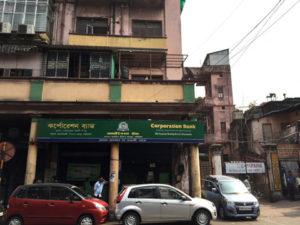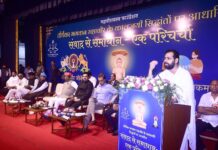
The recent attack in Orlando brought home the reality of the Islamist threat in America. Experts and popular pundits attempt to explain the threat, however, they ignore an inescapable reality that I encountered first-hand: that the Islamic State or ISIS and other radical Islamists have established a base in an area where one in every five human beings live: South Asia. South Asia, not the Middle East, represents the real, critical front in the war on radical Islam.
In November 2015, my associates in Bangladesh identified a house in the capital of Dhaka as a center of nascent ISIS activity. After confirming the allegations, I took the information to several people here and in India, who all had the same basic response: ‘Don’t be an alarmist.’
Since then, the ISIS presence in Bangladesh has become well established with the radical organization involved in the murder of police, religious leaders, secular bloggers, and others. ISIS and those they inspire have been equal opportunity murderers, sparing no religious group, killing Hindus, Muslims, Christians, and Buddhists in Bangladesh. To make matters worse, the Bangladeshi government continues to turn a blind eye toward Islamist actions, especially the ethnic cleansing of Hindus and other minorities. My associates on the ground continue to confirm the massive anti-Hindu activity that has made Hinduism an endangered species in Bangladesh, reducing the Hindu population from almost a fifth to less than one in eleven.
Do not be fooled by the recent mass arrests in Bangladesh. Only a few of those arrested have militant ties, and Prime Minister Sheikh Hasina and her Awami League continue to blame their political rivals rather than admit Bangladesh has become the new playground for ISIS, Al Qaeda, and other Islamic terrorists; who see more potential recruits there than in the Middle East. The Economist also makes the point that the arrests are a source of income for police, who get bribes averaging 8,000 to 20,000 taka for springing the prisoners. That’s a lucrative business in this poverty-afflicted nation.
Looking at the evidence rather than dismissing it as “alarmist” might have helped prevent this latest groundswell of Islamist activity. Unfortunately, the region’s intelligence and political leaders have a personal interest in suppressing the facts; as does our own State Department and others who are invested in maintaining the myth of Bangladesh as a “moderate Muslim nation.” We dare not make the same mistake again.
New evidence that I have verified first hand and on the ground has ratcheted up the stakes and seriously increased the danger for all of us: a growing Islamist presence in India; specifically, an ISIS cell operating in Kolkata. Locals will tell you that the unassuming office pictured here houses an advanced guard of ISIS partisans. Most are illegal migrants from Bangladesh; others are home grown. I investigated the building and found former entrances and exits blocked off and new security personnel controlling who comes and goes through the two that remain.
Those familiar with West Bengal, the Indian state with Kolkata as its capital, are not surprised. During the 34-year rule of the communist left front, the Chinese consulate in Kolkata was almost an arm of the state government and supported an open borders policy that set the groundwork for the radical activity we see today in West Bengal.
That policy has continued under West Bengal strongwoman Mamata Banerjee, who recently appeared publicly with the radical import from Bangladesh, Jamaat, which now operates openly in Kolkata. At the time, Mamata’s party secretary even told the press that making the Islamist party part of their ruling coalition “can be a possibility.”
The threat to us is real, however long term. The threat to Bengalis is immediate. In village after village where I have visited, residents tell the same story about increasing radical activity, attacks on Hindus, and police inaction or even support for the radicals. There was the young woman I met in Diamond Harbor who stopped an Islamist attempt to abduct her after she and her disabled brother refused Islamist demands that they leave their land.
West Bengal police responded by arresting her. There was the young mother in Norit who tearfully told me how her daughter was taken by the radicals, and West Bengal police refused to do anything about it; told her she just would have to accept never seeing her daughter again.
And there were the few remaining Hindus in a tiny Hooghly area village. Most of the Hindus fled following successive attacks supported by deliberate police inaction. We walked around the burned out homes and heard tales of abused women. Those who greeted us stay only to care for the ancient Mandir.
Multiple ISIS documents captured over the past year make it clear that the organization views India as its next big target. Several officials formally dismiss them noting India’s size, strength, and diversity.
That very head-in-the-sand thinking has allowed ISIS to develop in South Asia and create a soft underbelly on India’s eastern flank where ethnic cleansing of Hindus has begun to spread from Bangladesh and where the radicals’ victims and allies are mounting.
Dr. Richard L. Benkin is an independent human rights activist who has been fighting for justice in South Asia for the past decade. He is the author or A Quiet Case of Ethnic Cleansing: the Murder of Bangladesh’s Hindus
Dr Richard L. Benkin






